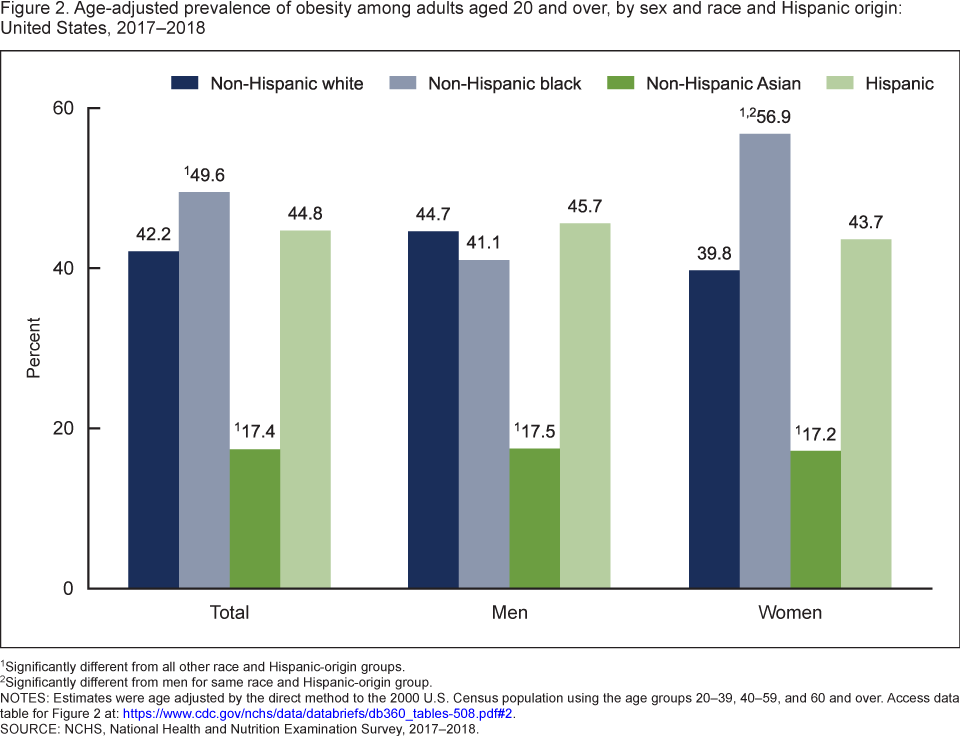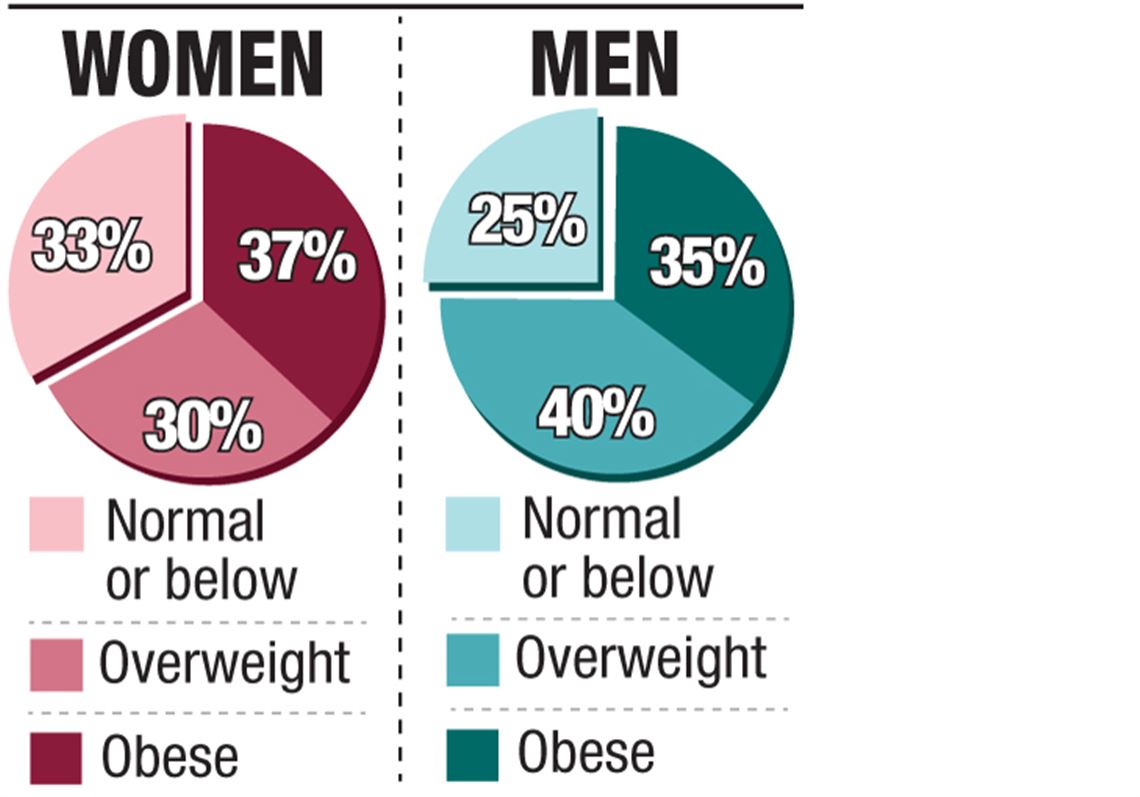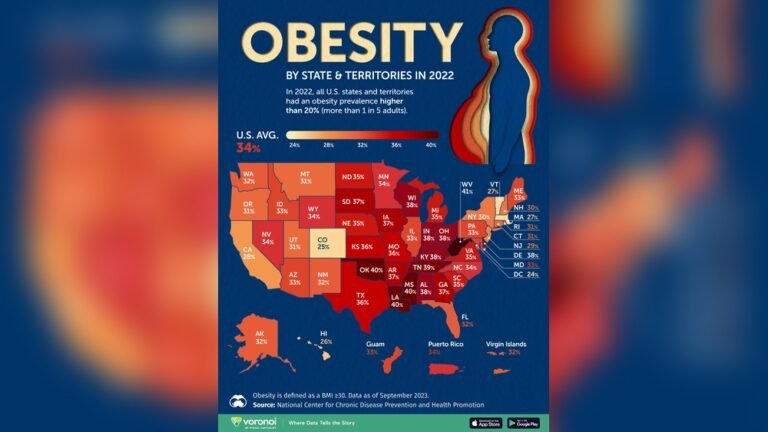Have you ever wondered just how many people in America are struggling with obesity? You might be surprised to learn that nearly 40% of adults in the United States are classified as obese.
This isn’t just a number—it’s a reflection of a growing health challenge that could impact you, your family, and your community. Understanding the scale of obesity in America is the first step toward making informed choices about your health. Keep reading to discover the latest facts, what’s driving these numbers, and what it means for your future.
Current Obesity Rates In America
Obesity remains a major health challenge in the United States. Tracking current obesity rates helps understand its scope and impact. The numbers reveal how many adults struggle with weight issues today. These statistics show trends and differences across the country.
Overall Adult Obesity Percentage
About 42% of American adults are obese as of recent data. This means nearly half of the adult population faces obesity. The rate has steadily increased over the last decades. Obesity raises the risk for heart disease, diabetes, and other health problems. Public health officials continue to monitor these numbers closely.
Obesity Rates By State
Obesity rates vary widely among states. Some states report obesity rates above 35%, while others are below 25%. Southern states tend to have higher obesity percentages. For example, West Virginia and Mississippi rank among the highest. States with lower rates include Colorado and Hawaii. These differences reflect lifestyle, diet, and access to healthcare.
Male Vs Female Obesity Rates
Obesity affects men and women differently. Women generally have a slightly higher obesity rate than men. Recent surveys show about 43% of women are obese compared to 40% of men. Hormonal and social factors may influence these differences. Both genders face serious health risks linked to obesity.

Credit: www.cdc.gov
Trends Over Time
Obesity in America has changed significantly over the past decades. Understanding these trends helps us grasp the scale of the issue. This section explores how obesity rates have shifted over time. It looks at recent rises and compares them to historical data. The patterns reveal important insights about public health and lifestyle changes.
Rising Obesity Rates In Recent Years
Obesity rates in the United States have increased sharply in recent years. About 40% of adults are now classified as obese. This marks a steady growth compared to previous decades. Factors like poor diet, lack of exercise, and busy lifestyles contribute to this rise. The increase poses serious health risks for millions of Americans. It also challenges healthcare systems nationwide.
Historical Comparisons
Obesity was much less common in the mid-20th century. In the 1960s, less than 15% of adults were obese. Over the following decades, the number gradually climbed. The biggest jumps appeared after the 1980s. Changes in food availability and technology influenced these shifts. Comparing past and present data highlights how lifestyles have evolved. It shows why obesity became a major health concern.
Factors Driving Obesity
Obesity in America results from many driving factors. These factors affect daily habits and overall health. Understanding them helps in addressing obesity effectively. Below are key contributors to the obesity epidemic.
Diet And Nutrition
Poor diet is a main cause of obesity. Many Americans consume high-calorie, low-nutrient foods. Fast food and sugary drinks are common choices. These foods lead to weight gain over time. Lack of fruits, vegetables, and whole grains worsens the problem.
Physical Activity Levels
Low physical activity increases obesity risk. Many people have sedentary jobs and lifestyles. Screen time, like watching TV or using phones, is high. Without regular exercise, calories burn slowly. This imbalance causes fat to build up.
Socioeconomic Influences
Income and education affect obesity rates. Lower-income families may lack access to healthy food. Affordable, nutritious options can be scarce in some areas. Education about healthy choices also varies widely. Stress and job demands can reduce time for exercise and cooking.
Genetic And Environmental Factors
Genes influence how bodies store fat and use energy. Some people inherit traits that increase obesity risk. Environmental factors like neighborhood safety and parks matter too. Living in areas without safe places to exercise limits activity. Family habits and early childhood nutrition also play roles.
Health Impacts Of Obesity
Obesity affects millions of Americans and brings serious health risks. This condition does not only change how a person looks. It also impacts many vital body functions. Understanding the health effects helps to see why obesity is a major concern across the country.
Chronic Diseases Linked To Obesity
Obesity increases the chance of many chronic diseases. Type 2 diabetes is common among obese individuals. Heart disease risk also rises with excess body fat. High blood pressure often develops in obese adults. Some cancers, like breast and colon, link to obesity. These health problems can reduce quality of life.
Effects On Life Expectancy
Obesity often shortens life expectancy. Extra weight strains the heart and lungs. This strain can lead to early death. Studies show obese people may live fewer years. The risk grows with higher body mass index (BMI). Managing weight can help improve lifespan.
Mental Health Considerations
Obesity can affect mental health deeply. Many experience low self-esteem due to their weight. Depression and anxiety are more common in obese people. Social stigma and isolation add to emotional stress. Mental health support is important for those affected.
Obesity Compared Globally
Obesity is a growing health challenge worldwide. Comparing obesity rates across countries shows where the problem is most severe. Understanding these differences helps highlight the scale of obesity in America.
Obesity Rates In Other Countries
Many countries face rising obesity rates, but the numbers vary widely. Pacific Island nations like Tonga and Nauru have the highest rates, exceeding 70%. These countries have small populations and unique diets that contribute to extreme obesity levels.
In contrast, some Asian countries have much lower obesity rates, often under 10%. Differences in lifestyle, diet, and physical activity affect these rates significantly.
How America Ranks Worldwide
The United States ranks among the top countries for adult obesity. About 40% of American adults are obese. This places the U.S. behind only a few Pacific Island nations. The high rate reflects widespread unhealthy eating habits and sedentary lifestyles.
America’s obesity rate is much higher than the global average, which is around 13%. This makes obesity a critical public health issue in the country.
Trends In Europe
European countries show varied obesity trends. Western Europe generally has higher rates, ranging from 20% to 30%. Eastern Europe faces increasing obesity rates as well, with some countries seeing rapid growth.
European governments often promote healthier lifestyles to combat obesity. Efforts include public awareness campaigns and improved food labeling. Despite these actions, obesity continues to rise in many parts of Europe.

Credit: www.toledoblade.com
Efforts To Combat Obesity
Obesity in America remains a serious health issue. Many groups work hard to reduce obesity rates. Efforts focus on policy, community support, and personal habits. These combined actions aim to improve health for all.
Government Initiatives
The government creates rules to promote healthy eating and exercise. Programs support schools in offering better food choices. Public campaigns raise awareness about obesity risks. Funding goes to research and prevention projects. Policies also limit unhealthy food marketing to children.
Community And Healthcare Programs
Local groups provide education on nutrition and fitness. Healthcare providers screen patients for obesity-related issues. Support groups help people stay motivated in their weight loss journey. Community centers offer exercise classes and healthy cooking workshops. These programs build a strong support network.
Individual Lifestyle Changes
People improve their diets by choosing more fruits and vegetables. Regular physical activity becomes a daily habit. Reducing sugary drinks and processed foods helps lower weight. Setting small, clear goals keeps motivation high. Personal changes lead to better health outcomes over time.

Credit: www.cdc.gov
Conclusion
Obesity affects millions of adults across America today. Nearly 40% of the population struggles with this health issue. It impacts daily life, health risks, and healthcare costs. States differ widely in their obesity rates, showing varied challenges. Understanding these numbers helps in raising awareness and guiding action.
Small lifestyle changes can make a big difference over time. Everyone has a role in supporting healthier communities. The fight against obesity continues and needs ongoing attention.



